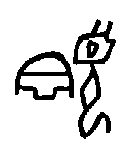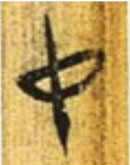Yimages of "Oracle of the Moon"
When I discover something in or about the Yi which I like, I post it here. Most of it can also be found in the 'origins' (link at top right).
Click on the title of each part to read the whole story
I was curious if a hexagram with its 6 lines might be stereoscopic, 3D, instead of stereometric, 'flat'. A molecule of carbon with its 6 atoms is not flat either, it is 3D. Imagine two pyramids base-to-base, then you have the shape of a carbon molecule.
Years ago I found online a structure like that, made out of cardboard by a woman - alas I forgot het name. This 6-pointed (hexagonal) form has 12 edges, but it also has 8 sides or planes. It is possible to write the 8 trigrams on it with a logical connection to the 4 seasons and the 12 astrological signs. The plane of 'Earth'/winter has the three winter signs on its edges. The edge of each of those three connect to the plane with their own trigram-element. Sagittarius to fire, Acquarius to air. Interesting is that trigram Earth is season-element winter, trigram Mountain is element earth, trigram Thunder is season-spring, trigram Wind is air, trigram Heaven is season-summer, trigram Fire is fire. So there are 4 trigrams that rather function as 'time'. Of course the elements of the trigrams (fire, wind) are just one manifestation, the names of the trigrams are not really fire or wind.
Will be continued...


2022
象曰:澤中有雷,隨;君子以嚮晦入宴息。
"In the center of the marsh is thunder: Following." The ideogram is hill, a walking foot, a hand with a tool and a piece of meat: A hunter, following his prey.
Following, pursuing.
变中爻为兑,为泽,雷泽交施,
When the middle line (of trigram Thunder) changes, it activates Marsh, which activates rain. Thunder and rain "work together". This is an image of a flag, "following the wind".
A the maiden follows her husband.
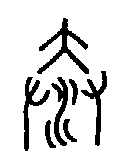
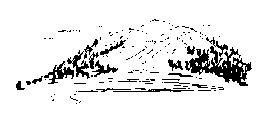
2021
Mount Tai dominates the fields of the Zhou. Everyone who ever lived close to a mountain, even a small child, knows it means 'home'.
The mountain is the symbol of your home. It is yours, even when it is not perfect. The mountain's solid eminence proves it will be there forever.
Unchanging hexagrams are confusing to many people. Is it good or bad? Is there something I can do or is this a total standstill? Should I be concerned or relieved?
It depends on the question, but usually it is not really bad, often even a good thing. Looking at the question and figuring out how to react needs intuition... And then it got even more interesting.
Read more
Oct.23 2020
Lots of fiction among laymen, but maybe just as well among sinologists
Someone who attended Harmen's course told me that Harmen mentioned my name as one of the people who 'erroneously' assume that the sound of a Chinese character has something to do with the meaning.
I know that many (most?) sinologists agree that the sound is not related to the meaning, it is 'only the phonetic'. It makes me wonder - how can Chinese, when they talk, understand each other when the sounds they utter have no meaning?
Read more
Day 160 of the Chinese year: 6th moon, day 10.
2020
Today, Wednesday July 15 2020, is the 10th day of the 6th moon in the Chinese almanac, day 160 of the year. If you have the beautiful book of Deng Ming-Dao, "The Lunar Tao", you can find the 'color' of this day: 'The blade leads the breath".
Or you can find it in the Shenshu, poem 160. Both talk about strength. One about wielding a sword, the other about tackling a large work. Both emphasize that strength needs a special way of managing energy. Or find the hexagram: 12! 12...?
Read more For all life on earth, it is paramount that the seasons follow their pattern. Any deviation can be disastrous, so the seasons need to be re-aligned if they stray.
Read more虎變
The "Tiger Change" and "Leopard Change" are special ways to change things. Usually it doesn't mean to change oneself, but to change things 'like a tiger'.
Read more需于血 出自穴
In almost all translations, this sentence is rendered as if one has to get out of that cave or hole. The Chinese text has no demand. It just puts two small sentences in sequence, like in ALL other lines of hexagram 5.
Read more The mare belongs to the earth and nature. She symbolizes that space, strength and fertilty. She fills the earth with new creatures, every year adding one or two foals to the herd.
The image is a very old version of the character 'ma', horse.
Read more解頤
Jiěyí, freedom of the jaws: smiling or laughing.
Jiě is the name of hex.40, Yí is the name of hex.27. When you get 40/5,6 - 27, you get Jiěyí...
Read more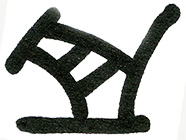
Zhen is written as 雨 ‘rain’ over 辰 chén. Chen is a time marker, and it is a picture of a plough or ard.
Read more
Hex.63, trigram Fire, the sun, below trigram Water. It is the end of the day. The sun crossed heaven and now she is on the horizon, sinking into the primeval ocean.

Hex.64, trigram Water below trigram Fire. It is dawn, the sun is low on the horizon and the first rays appear, a new day is on its way. A moment of no results yet but lots of possibilities.
Read more Have you ever wondered about 27.1, about where to find that magic turtle back which so often runs away?
It is right there in hex.27, hiding in the top line.
Read more老夫
venerable man
In hexagram 28 there are an old man and an old woman. Actually 'venerable', nothing derogatory here. When the man gets a wife, great. When the woman gets a husband, no blame no praise. Why this difference?
Read more弗損益之
Not decrease increase it
In the second and the top line of hexagram 41 it says 弗損益之 "not decrease increase it". How does that work? Read more
Zhong, center, is part of the name of hexagram 61. In the Yijing there are 14 places where it occurs. Two refer to the sun in the center of heaven: noon. There is also 'moving central' or 'hit target'.
Read more The character Tuan, the 'judgment' of the hexagrams, is a picture of a pig or boar, which is also part of the name of hex.33. Tuan is an invocation to the spirits or gods.
Every hexagram has its own incantation, which belongs to the specific 'time' of the hexagram.
Read more歸 妹
Nobody wants to get hexagram 54. The poor maiden who has to adapt to things which have nothing to do with her own wishes. They are wrong!
Read more The judgment of 43 in Wilhelm's translation:
Break through. One must resolutely make the matter known at the court of the king.
A more literal translation: Breakthrough raise at king's court. This sounds as if Guai is an object. But the 'court' also has more meanings than just court.
Read more When you cast the lines, you build up a hexagram, consisting of two trigrams. When one or more lines are 'old', there is also a relating hexagram with its trigrams.
Every trigram represents part of your question/answer. Every part of it can be found in them: the base or core, the advice, the situation, the need, the energy.
Read more Martin: "The lower trigram is a source of power or force, it's the 'engine' or the 'horse'. The upper trigram guides that power or force, it's the 'steering wheel' or the 'rider'."
What I find interesting about this way of looking at hexagrams is that every hexagram becomes a kind of alchemist recipe ...
Read more
I am not talking about the simple way how many people ask the oracle:
"Does he love me?" (yes or no??)
But about understanding the mysteries. Not only out there, but also in here, in your soul.
Read more Well - not publishing any despair, but getting despaired about publishing. When I made the Shenshu oracle, I sent it to a Dutch POD-publisher. They helped me fix a few small things and wallah! Or if you prefer voilà! A gorgeous book!
I also wanted it available in the US, because ordering from Europe means high shipping costs. But from there on things started to get complicated. Everything which couild go wrong, did so. Everything I sent in, got refused.
Read more棟
In hexagram 28 there is this character: the ridgepole. In the fanyao of line 3 one finds a masonry-lined well and in the one of line 4 a stone.
Read more浚
Loan characters make Chinese complicated. Sometimes a character cannot be used because it happens to be the emperor's name. But what is the reason all the other times?
Read more
in hexagram 61 and many other places.
July 10, 2019
The character at left is usually translated as truth. But there is also another meaning: "support of the spirits, things will go as planned, support of allies".
Read more巽
Shuogua: For putting all things in motion there is nothing more vehement than thunder; for scattering them there is nothing more effective than wind.
Read more宗
The ancestor can be a leader, grandfather, a person of authority in a family, anyone who exercises some control. Husband (this is China long ago, feel free to change it to wife, if that fits better).
Read more幾
In hexagram 3 line 3 is the character ji, which can be translated as "seed", the very first beginning of something, when it is not yet really visible.
Read more
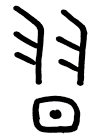
Date: 2016-something
The great images says:
君子 noble one
以 use
常德 constant virtue
行 move, perform
習 exercise, habit, expertise in a certain field, repeat.
教事 teach events
The character
習 is the one above: XI, repeat: a pair of wings (= to fly), and sun (or day).
The name of hex.29 is Xi Kan: repeated pit.
Kan is pit, but also a rhythmic sound like drumming, kankan.
Read moreIf you want to post a reaction, you can do so HERE
(but I am not posting there anymore - too time consuming)
 Yi Jing, Oracle of the Moon
Yi Jing, Oracle of the Moon
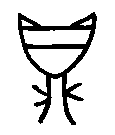
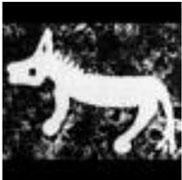
 Zhen is written as 雨 ‘rain’ over 辰 chén. Chen is a time marker, and it is a picture of a plough or ard. Read more
Zhen is written as 雨 ‘rain’ over 辰 chén. Chen is a time marker, and it is a picture of a plough or ard. Read more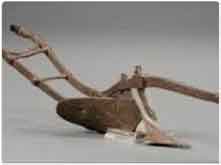
 Hex.63, trigram Fire, the sun, below trigram Water. It is the end of the day. The sun crossed heaven and now she is on the horizon, sinking into the primeval ocean.
Hex.63, trigram Fire, the sun, below trigram Water. It is the end of the day. The sun crossed heaven and now she is on the horizon, sinking into the primeval ocean. Hex.64, trigram Water below trigram Fire. It is dawn, the sun is low on the horizon and the first rays appear, a new day is on its way. A moment of no results yet but lots of possibilities. Read more
Hex.64, trigram Water below trigram Fire. It is dawn, the sun is low on the horizon and the first rays appear, a new day is on its way. A moment of no results yet but lots of possibilities. Read more